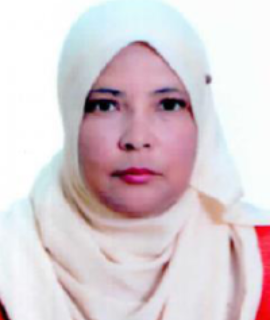Title : Manufacture of a high performance ceramic membrane based on silicon carbide recycled from kerf loss sludge
Abstract:
Ceramic membranes are durable and long lasting for aggressive processing environments. They have high mechanical strength, good stability, antifouling properties, high water permeance, fast flux, and strong resistance to chemicals and thermal shock in addition to a long service life. Due to these excellent properties silicon carbide (SiC) membranes have achieved widespread application in industrial wastewater and oily wastewater treatment facilities [1]. This paper proposes the manufacture of ceramic membrane based SiC recycled from kerf loss sludge derived from wire saw of silicon ingot into thin wafers. The cutting fluid waste was composed of polyethylene glycol (PEG), SiC, silicon (Si) and metals fragments (e.g. Fe, Cr, Cu, Ni) which were from the worn of cutting wire[2]. A low-cost and easy approach to recover SiC particles was also proposed in this study. The recycling process included a liquid-liquid extraction, phase transfer separation and acid leaching that were optimized to generate a mixture of powder containing Si and SiC. The SiC powder was successfully recycled by alkali dissolution process in NaOH solution at optimal conditions (powder / NaOH) ratio of 1.6, pH 13, 500rpm at 90°C) by converting all the Si species into sodium silicate (Na2SiO3) solution with a recovery efficiency and purity of 98.8% and 97.69% respectively. The black α-SiC powder thus recycled with a particle size between (5 -10)μm was used as raw material and the Na2SiO3 was collected as a sintering additive. To reduce the sintering cycles and shorten the preparation periods of SiC support membrane, we report a fabrication route for SiC membrane by Co-sintering process in liquid phase with the aid of sintering additives in the desired amount. 89 wt% of SiC powder was mixed with small amounts of Na2SiO3 and Boric acid (H3BO3) as a binder, sodium dodecyl sulfate (SDS) and sodium carbonate (Na?CO?) as an additive. The SiC support membrane was formed during an in-situ reaction at lower sintering temperature (800-10000C) in air without inert gas protection and cooled gradually to room temperature. As seen in the SEM images (Fig.3&4), a good connection was formed between the SiC particles, and many pore structures were established as the sintering temperature increased to 10000C. The open porosity of the as-prepared SiC membrane decreased from 48% to 43% with increasing heating temperature from 800°C to 1000°C. When the sintering temperature reached 1000 °C, the mechanical strength of the SiC membranes was obviously improved. The pore size of the membrane gradually increased with increasing sintering temperature. This was due to the sintering aids gradually melting into the liquid phase, which led to an increased pore size and degree of regularity (Fig.5). However, when the sintering temperature was too high, the membrane gradually densified due to the excessive liquid phase that was generated, which decreased the average pore size of the membrane.
My presentation is a mixture of a variety of elements inspires the audience to learn more, and ask further statements to maximize their understanding of the issue. With the involvement and enthusiasm of people like us, recycling is back. We are responsible for preserving and protecting our resources for ourselves and for future generations:
- Protecting ecosystems and wildlife. ...
- Conserving natural resources. ...
- Reducing demand for raw materials. ...
- Saving energy. ...
- Cutting climate-changing carbon emissions. ...
- Cheaper than waste collection and disposal. ...
- Tackles youth unemployment.

